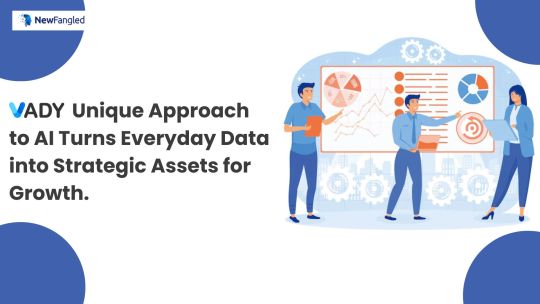#StrategicData
Explore tagged Tumblr posts
Text
For Clients: Preparing Briefs That Enable Rich Insights
By Paul Nnanwobu, Random Dynamic Resources Ltd
We often say good research begins with a good question. But in truth, it starts even earlier—with a clear, thoughtful brief.
At Random Dynamic Resources Ltd, operating across Nigeria and Canada, we've reviewed hundreds of client briefs over the years—some sharp and focused, others more… let’s say exploratory. And while there’s no such thing as a perfect brief, some small shifts in how clients frame their needs can make the difference between shallow results and rich, decision-ready insights.
Here’s the thing. Researchers aren’t mind readers. We don’t magically extract meaning from vague goals. But with the right foundation, we can uncover patterns, nuance, even surprises that reshape strategy. That starts with alignment.
So, for those who are planning to commission research—whether on customer behavior, policy attitudes, market testing, or social impact—here are a few simple, real-world tips for preparing briefs that lead to deeper, more useful results.
1. Be Clear About What You Actually Want to Learn Seems obvious, right? But many briefs start with long descriptions of the business or organization, followed by a laundry list of potential objectives. The result? A cloud of ambition but no core question. Try this instead: boil it down to 2–3 questions you must have answers to by the end of the study. If everything else dropped away, what would still matter?
For example, saying “we want to understand youth engagement with our brand” is broad. But “we want to know what influences trust among first-time youth users of our mobile platform in Lagos and Nairobi” gives researchers a direction—and a lens.
2. Context Is Gold One of the most useful things clients can do is share background context—even the messy parts. Failed pilots. Market shifts. Office debates. This doesn't make you look disorganized; it gives us texture. And sometimes, what you think is the research problem isn’t actually the issue—it’s a symptom.
We once had a client in the agricultural sector who wanted to test a new digital service. But after reviewing their brief and digging deeper, we realized the real barrier wasn’t the tech. It was local skepticism, tied to past programs that had overpromised. Without that context, we might have asked the wrong questions entirely.
3. Define the Audience, Then Question It Clients will often specify “we want to talk to women aged 18–45 in rural areas.” That’s a start. But we’ll ask—why that group? Is it based on sales data, assumptions, policy mandates? Sometimes narrowing the audience makes sense. Other times, it excludes voices that could surface new angles.
Also, think about representation. Are there groups you’ve overlooked because they’re hard to reach or don’t respond to surveys easily? Including them might cost a bit more—but could lead to insights that pay off long-term.
4. Be Honest About Constraints Budget. Timeline. Internal politics. Share them. We’re not here to judge—we’re here to work within reality. If you need findings in six weeks for a board meeting, say so. If there are topics you can’t touch due to sensitivities, flag them. Surprises don’t help anyone at the eleventh hour.
5. Leave Room for the Unexpected Some of the best findings aren’t answers to direct questions—they're revelations that emerge when people feel free to speak. So while structure is essential, rigidity can kill insight. In your brief, allow space for exploration, especially during qualitative phases. You might discover an issue you didn’t even know existed.
6. Think Beyond the Report What will you do with the data? If the goal is to inform a campaign, we may recommend testing messaging along the way. If it’s to guide a product, we may propose rapid feedback loops. If the findings are meant for stakeholders or funders, we might suggest visual storytelling formats.
Research doesn’t end with a report. It begins there.
At Random Dynamic Resources Ltd, we’re constantly working with our clients—across continents and sectors—to build research that matters. And I’d like to quietly mention here, with some pride, that we’re nominated for the 2025 Go Global Awards, hosted by the International Trade Council this November in London. This event isn’t just a celebration—it’s a convergence of business minds from around the world, looking to solve real challenges with real tools. Being part of that space validates the very things we’ve been committed to—depth, partnership, adaptability.
Because ultimately, good research isn’t a transaction. It’s a collaboration. And it begins—not with fieldwork—but with the brief.
#ResearchBriefs#ClientTips#InsightDrivenResearch#QualitativePlanning#CollaborativeResearch#StrategicData#FieldworkPreparation#RandomDynamicResources#NigeriaCanada#GoGlobalAwards2025#HumanCenteredData#BetterQuestionsBetterAnswers#PaulNnanwobu
0 notes
Text

VADY transforms everyday business data into a powerful strategic asset. Unlike traditional tools, VADY AI analytics is context-aware, ensuring every data point contributes to intelligent decision-making. With AI-powered data visualization, businesses gain clarity on key performance indicators, ensuring smarter, more strategic growth. Elevate your business with VADY’s AI-powered intelligence!
#VADY#NewFangled#AIForBusiness#BusinessGrowth#SmartAnalytics#AIModels#DataToDecisions#AIForSuccess#AIInnovation#StrategicData#AIDrivenStrategy#BusinessAI#FutureOfData#DataVisualization#SmartEnterprise#data democratization#ai to generate dashboard#machine learning#data analytics#big data#data at fingertip#ai enabled dashboard#etl#nlp
0 notes